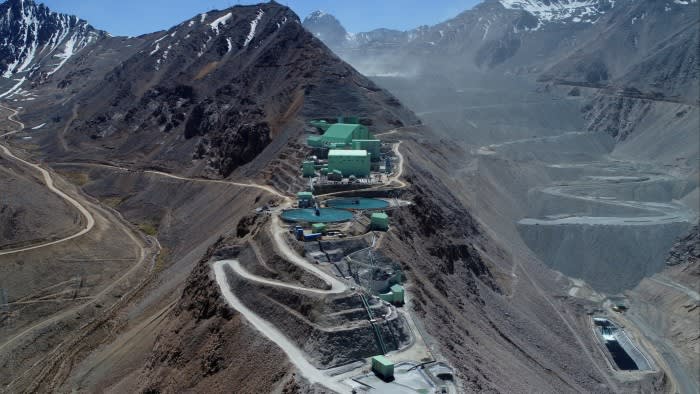Unlock the Editor’s Digest for free
Roula Khalaf, Editor of the FT, selects her favourite stories in this weekly newsletter.
After its £31bn bid for Anglo American was rebuffed last week, BHP — the world’s largest mining group — is mulling an improved offer. Other suitors may emerge too. On the surface, the effort to acquire the UK-listed mining group’s complex and sprawling business may seem more trouble than it is worth. But it is what is below ground that is luring buyers.
Anglo American owns lucrative copper mines in Chile and Peru, and prices for the shiny red metal have been soaring recently. Analysts at Citigroup last month said the commodity had entered a bull market. It is hard to disagree. Contracts for copper futures have been rising well above the spot price since the start of 2023.
Copper is an essential raw material for economic growth. It has widespread application in homes, factories, energy grids and power generation. It is also used in renewable technologies including electric vehicles, solar panels and wind turbines. Artificial intelligence data centres rely on copper too for powering and wiring. All that demand is rubbing up against only gradual increases in supply.
The acquisition of Anglo American’s mining sites, however, makes little contribution to boosting global copper output. It means shifting assets from one owner to another, rather than actually creating new ones. It highlights a worrying reality: it is simpler and cheaper to buy out a rival copper miner than to build a new mine. This raises significant concerns for meeting the rising copper demands of the global economy and the green transition.
Copper demand could double by 2035 and lead to supply shortfalls even under optimistic assumptions, according to S&P Global forecasts. Chile, Australia and Peru have the largest known copper reserves. China’s production of refined copper has surged in recent years, but given the huge global demand, the commodity superpower cannot be relied upon to plug the production gap.
The pipeline of new projects is thin, and exploration budgets for copper have fallen since the early 2010s. Copper mining is a capital-intensive endeavour. Some analysts think prices would need to rise by about 20 per cent from current levels to attract investment in new projects. Even if prices get there, there are broader challenges.
It can take well over a decade to move from discovery to production, by which time profitability and politics may have turned against any project. That makes shareholders and other financiers reticent to invest today (even if larger entities could better fund new exploration). Labour and equipment have also become dearer, the best deposits are harder to find, and greater — though justifiable — scrutiny of the impact of mining on the environment and communities has made digging for copper more of a minefield.
What can be done? Governments have a role in bolstering the business conditions for copper mining. Speeding up permitting processes would help. The National Mining Association estimates that it takes seven to 10 years on average to obtain the rights necessary to bring a mine into operation in the US. Skills initiatives and support to make digging, research and exploration less risky are important too, to kick-start new projects. Trade and diplomatic outreach is also needed to build ties with copper-producing nations.
But the companies are key. Miners need to augment their extraction processes and vetting. Too many projects have suffered from safety failures, environmental damage, and exploitation. Mining responsibly also means ensuring local economies see benefits — building trust is important for long-term business. Improvements in copper recycling and reducing waste at existing sites can also help at the margin. And, given the world’s insatiable appetite for copper, shareholders should also realise that there is more money to be made in backing new sites, rather than just jostling for existing ones.


